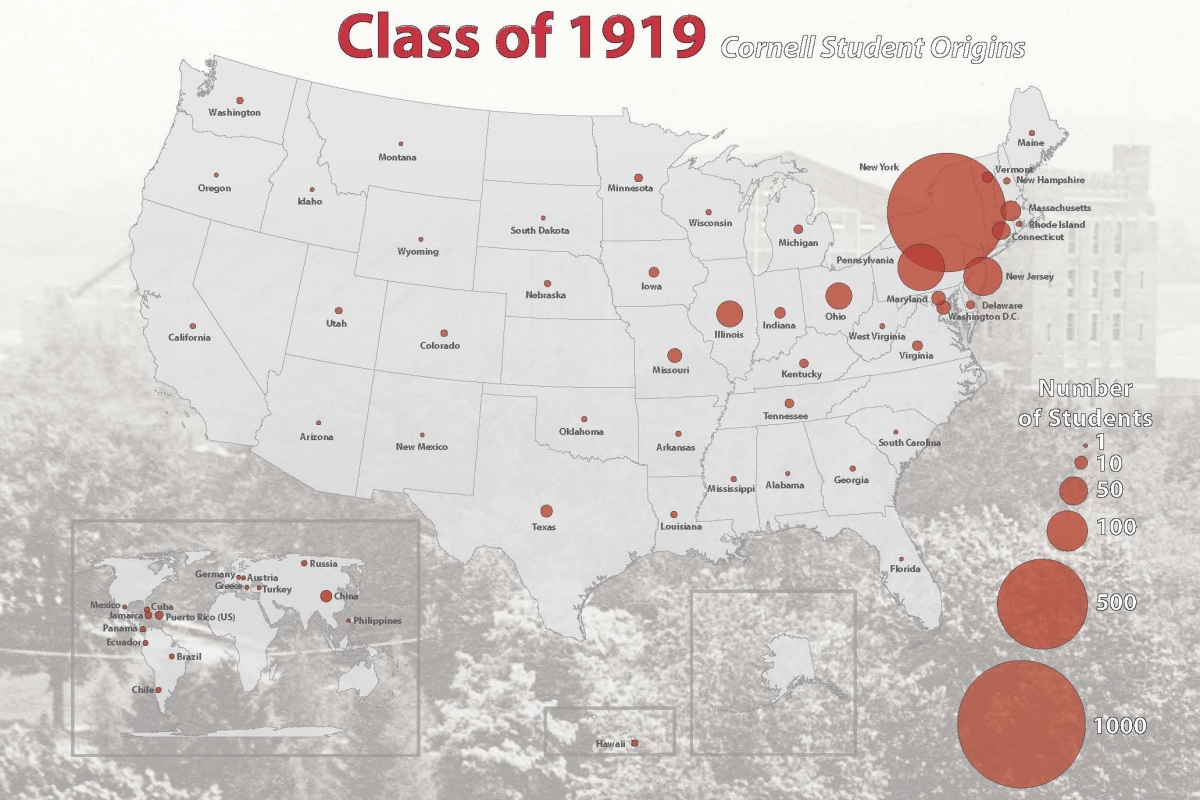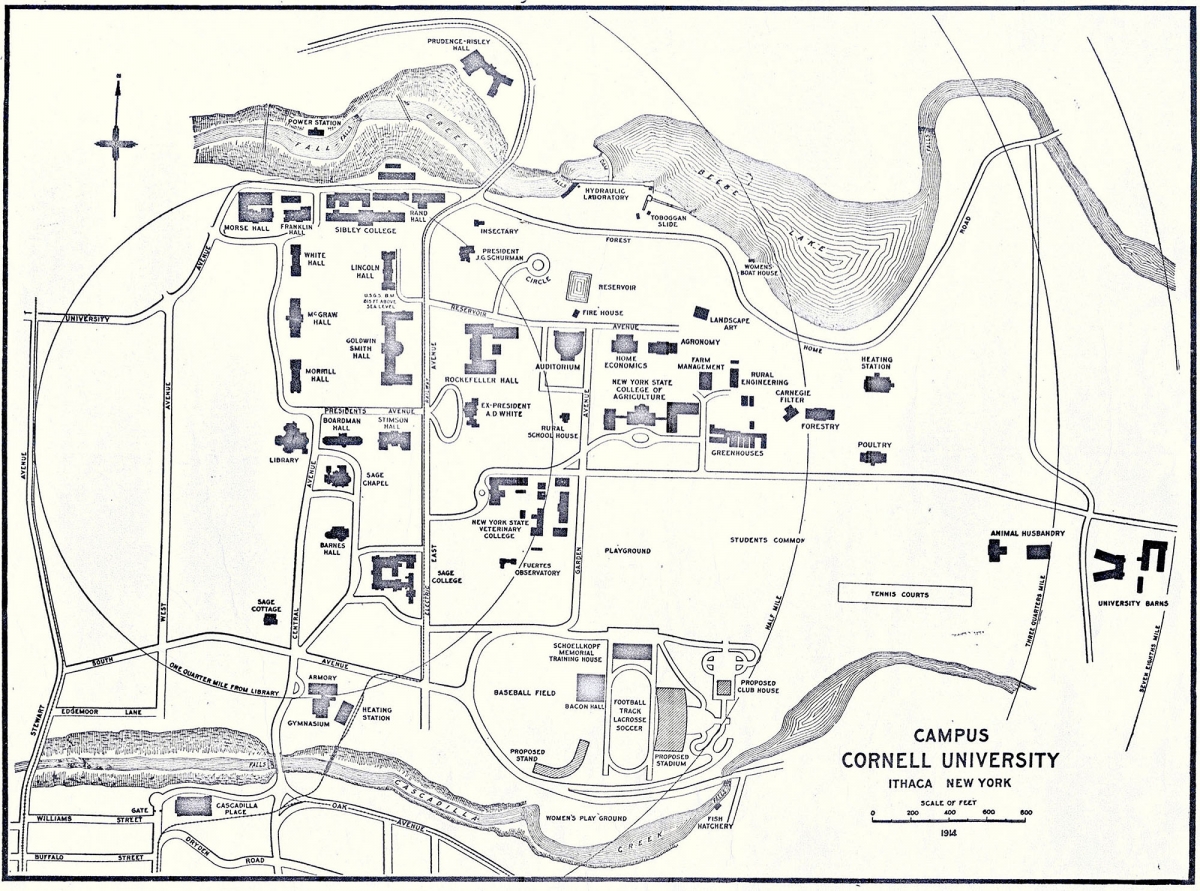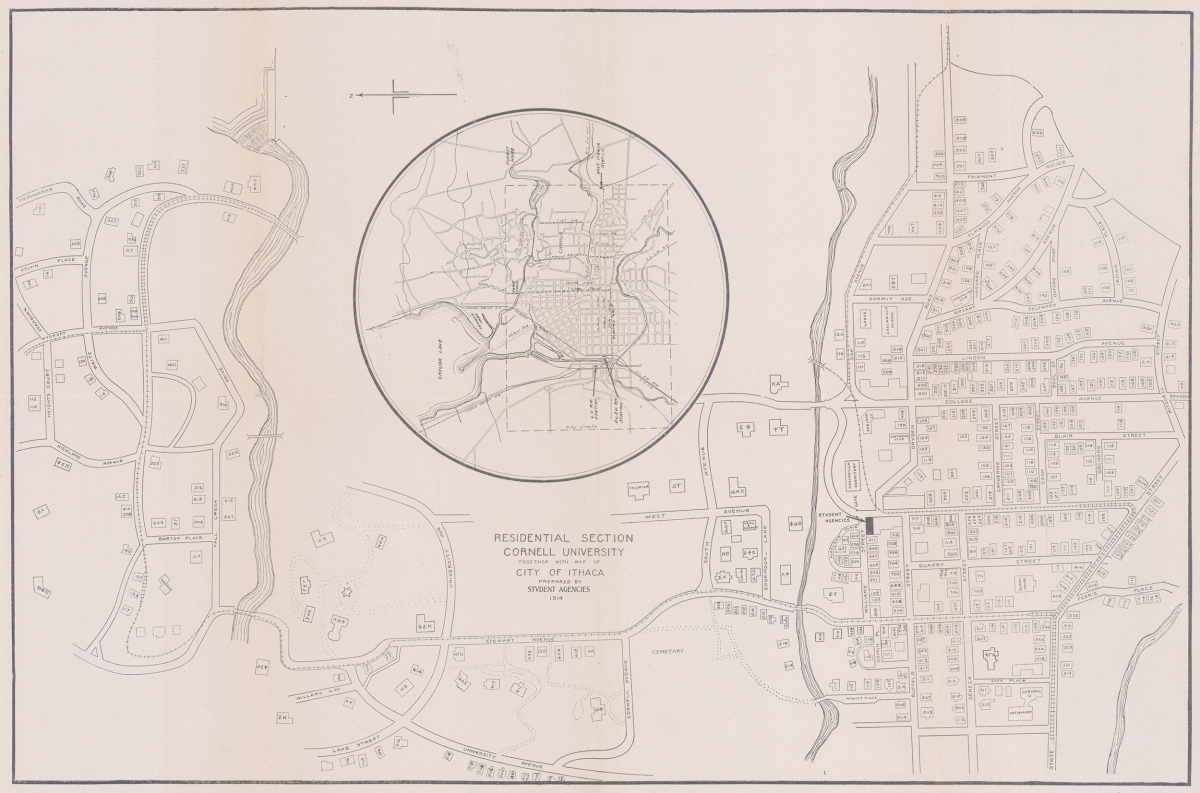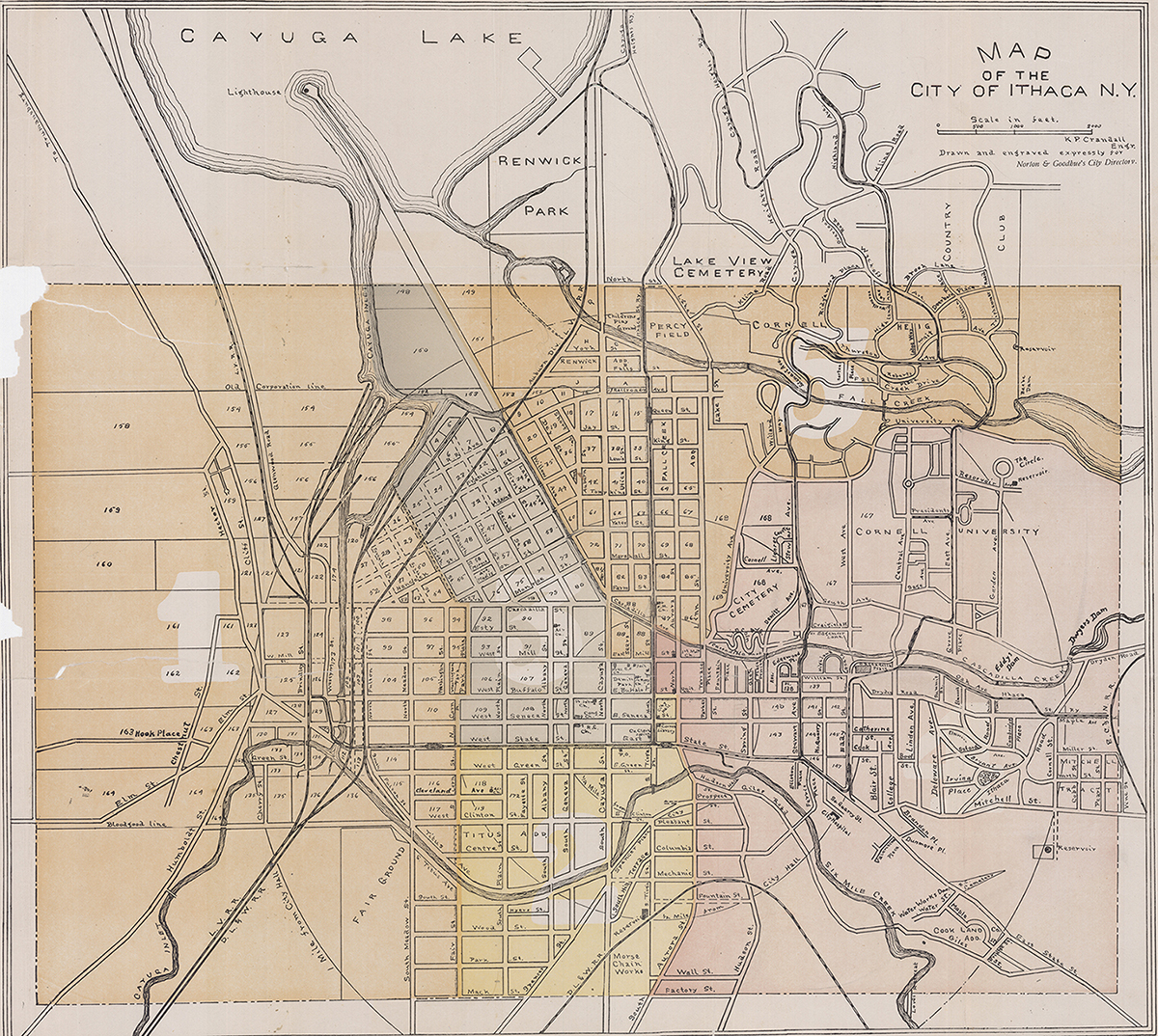

1915 was the year of Cornell's 50th anniversary. 537 freshmen enrolled in in the University that year, representing 44 states and 14 foreign countries. The Class of 1919 was deeply affected by World War One. According to The Cornellian (1919), no Cornell class suffered such “almost complete annihilation as a definite organization.” At the beginning of the Fall semester of 1917 1,805 Cornellians were enlisted in the army. More than one quarter were from the Class of 1919; twelve of them did not return.

In the 50 years since its establishment, the university estate grew from 200 acres to 1,378 acres. According to the 1915 Circular of Information, the main buildings in Ithaca are “grouped around a great quadrangle flanked by Goldwin Smith Hall (history, languages, philosophy, political science, etc.), Lincoln Hall (civil engineering, Sibley College, mechanical engineering), White Hall (architecture, mathematics), McGraw Hall (geology, vertebrate zoology), Morrill Hall (administration, psychology), the University Library, Boardman Hall (law), and Stimson Hall (medicine), with Franklin Hall (electrical engineering), Rand Hall (pattern and machine shops), Morse Hall (chemistry), Rockefeller Hall (physics), the buildings of the College of Agriculture, the Veterinary College. the Astronomical Observatory, the Gymnasium and Armory, and the Drill Hall conveniently near.”

The official Cornell Publications volume gives the following description of the university residential halls: “The system of residential halls at Cornell University at present consists of Cascadilla Hall, the original building at the South end of the Campus, and four new halls comprising Baker Court and Residential Hall D. These latter buildings form the nucleus of the new group of dormitories lying to the West of the main Quadrangle and bounded by Stewart, University, and West Avenues.” The map also lists the fraternity houses and private residential places.

At the beginning of the 20th century, Cornell was already having a strong impact on the local community. In her book, “Ithaca: A Brief History,” Carol Kammen cites a Russell Sage report, which observed that in 1913 Ithaca contained little manufacturing, and Cornell was the city’s major employer. The report found that wages were considered very low and needed supplementing; Ithaca’s tax rates were thought to be high, while the city spent liberally on its school system. 14.8% of the population was supported by the Associated Charities. Citing data from the 2000 Census, Kammen concludes that these findings hold surprisingly true: there are people in need, taxation remains high, wages remain low and considerable money is spent on education.